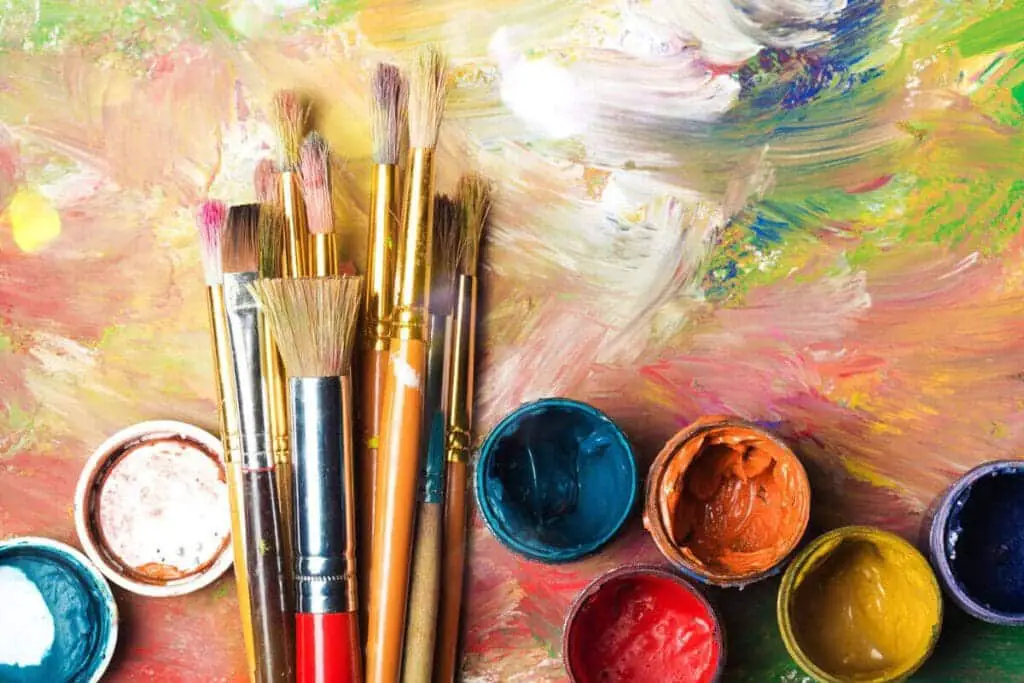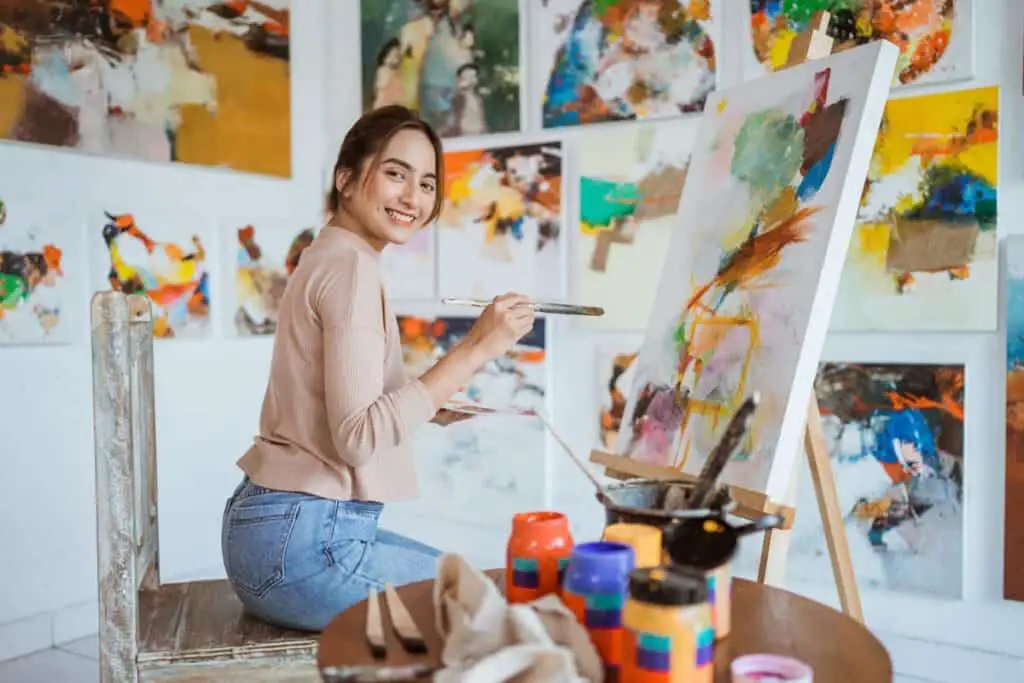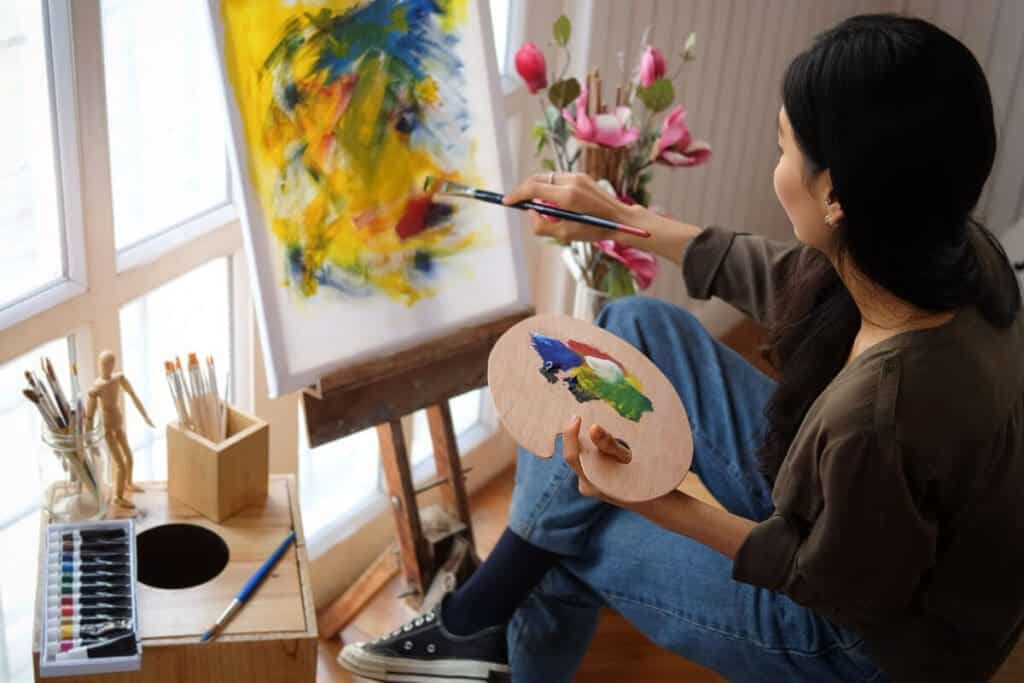Art speaks a universal language of creativity and expression in its myriad forms. One of its most vibrant dialects is an oil painting, a medium steeped in history and rich with possibilities.
From the luminous masterpieces of Rembrandt to the emotive canvases of Van Gogh, oil painting has been the chosen form of expression for countless artists across the centuries. Yet, the beauty of this timeless art form lies not only in its historical prestige but also in its inherent accessibility. The First Brush Stroke: A Beginner’s Guide To Oil Painting is a comprehensive exploration into the oil painting world explicitly designed for novices. As we delve into the tools, techniques, and tips that form the cornerstone of this art form, we invite you to discover its magic and potential for yourself.
Table of Contents
- A Beginner’s Guide To Oil Painting – Your First Brush Strokes
- The Basics – Understanding Oil Paint
- Gathering Your Materials
- Setting Up Your Art Workspace
- Basic Painting Techniques
- Creating Your First Oil Painting
- Embrace The Journey Of Your Oil Painting.
- Tips And Troubleshooting With Your Oil Painting
- Learning From The Masters
- Continuing Your Artistic Journey
- The Canvas Awaits – Start Oil Painting
- Watch Our Short Stories About 7 Tips For Creating Your First Oil Painting Below!
- Related Questions
A Beginner’s Guide To Oil Painting – Your First Brush Strokes
Despite its grand tradition, oil painting can be as straightforward or complex as you make it. The canvas is a realm of infinite possibilities, waiting to be explored and understood, one brushstroke at a time.
It is a journey where each step – each dab of color, each layer of texture – contributes to your growth as an artist. Whether you dream of creating your masterpiece or seek the simple pleasure of artistic creation, this guide is the perfect starting point in your oil painting adventure. Let’s pick up the brush and lay down the first stroke.
Step into the timeless world of oil painting – a realm that has captivated artists from the old masters to modern creatives. With its flexibility and depth, the vibrant medium of oil paint has enabled the creation of some of the world’s most celebrated art pieces.
One of the things we love about oil painting is that we believe anyone can learn to oil paint. You can learn on your own or attend a school or a class to learn, but we believe everyone has an artist within them.
Oil painting can be an accessible and rewarding endeavor even for beginners. Read on to start your journey into oil painting, unpacking its fundamentals, techniques, and practical tips to help you progress from a novice to an adept painter.
The Basics – Understanding Oil Paint
One of the basic things you can do is to understand a few things about oil paints. Read on as we explore this medium of art.
Know Your Medium
Oil paint is a mixture of ground pigment and drying oil, typically linseed oil. Its slow drying time sets it apart, allowing blending and layering. It offers a range of possibilities, from thick, textured strokes to thin, detailed lines, and its vibrant color does not fade over time.
Gathering Your Materials
Once you understand what oil paints are about and why they are such a popular medium for artists, the next step is to gather your oil paint supplies.
Acquiring Essential Oil Paint And Art Supplies

To start, you will need the following:
- Oil paints – A basic set of colors includes Cadmium Red, Cadmium Yellow, Ultramarine Blue, Burnt Umber, Titanium White, and Ivory Black.
- Brushes – Get a variety of shapes (flat, round, filbert) and sizes. Brushes for oil painting are usually made from hog bristle or synthetic fibers.
- Palette – A flat surface for mixing your paints. This can be made of wood, glass, or acrylic. We usually get plastic and then put aluminum foil over it, allowing easy cleanup.
- Palette Knife – For mixing paint.
- Canvas – This is your painting surface. You can buy pre-stretched and pre-primed canvas or stretch and prime your own. We have done it both ways, and both ways work fine.
- Mediums – These alter the texture and drying time of your paint. For beginners, a simple medium to start with is linseed oil.
- Cleaning supplies – Paint thinner for cleaning brushes and rags or paper towels for wiping excess paint off brushes. We will cut up some old clothes and then use those as rags. When we are done with them, I usually toss them out.
Setting Up Your Art Workspace
Once you have all your supplies, the next step is to find your workspace. If you are lucky enough, we recommend having a designated place for your oil painting as it makes it easier than taking it up and down all the time you want to paint.

Creating A Conducive Environment
Ensure your workspace is well-lit, preferably with natural light. Keep your materials within easy reach, and consider setting up a space where your work can be left undisturbed, as oil paint takes longer to dry.
We find it best to have an area that is also well-ventilated and where we can have open windows.
Basic Painting Techniques
We believe that anyone that picks up a paintbrush is an artist. So the minute you pick up that paintbrush, you are an artist.
But with any form of art, there are some basic painting techniques you should master.
Mastering The Basics Of Painting.
Start by experimenting with your paints. Mix them, play with different brush strokes, and get a feel for the medium. Understand the concept of fat over lean: each layer of paint should contain more oil (be ‘fatter’) than the one beneath it to prevent cracking.
Creating Your First Oil Painting
Once you have your supplies and have stated the basics, you are ready to create your first oil painting. Here are some steps for you to consider.

Start Simple
Begin with a simple subject. A still life or a landscape with large blocks of color can be great starting points. Sketch your composition with a thin paint wash before wearing thicker layers.
Layering Your Painting
Build your painting up layer by layer. Start with an ‘underpainting’ using thinned-down paint, establish your darks and lights, then gradually add more layers to develop textures and details.
Embrace The Journey Of Your Oil Painting.
Embarking on the path of oil painting is an exploration of both the art form and your artistic self. While the process might seem daunting initially, remember that even the old masters were once beginners, too.
The key to mastering oil painting is not instantaneous perfection but =consistent practice, continued learning, and the sheer joy of creation. As you make those first strokes on your canvas, know that you are stepping into a tradition of art that has brought beauty and expression into the world for centuries.
Welcome to the enriching world of oil painting – here’s to the masterpieces yet to come from your easel.
Tips And Troubleshooting With Your Oil Painting
As with any artistic endeavor, some tips and tricks can help you better master your art. Here are some tips to help you with your oil painting.
Keeping Your Paints Workable
Because of their slow-drying nature, oil paints can remain workable for several days. Use a palette with a lid or cover your palette with cling film to keep the paints from drying out between sessions.
Cleaning And Maintenance
Clean your brushes thoroughly after every painting session to prolong their lifespan. Use a brush cleaner or solvent (like turpentine or mineral spirits), but remember to do this in a well-ventilated area to avoid inhaling fumes.
Dealing With Mistakes
One of the advantages of oil painting is its forgiving nature. Mistakes can be easily corrected even after the paint has dried. You can scrape off unwanted paint using a palette knife or paint over it once it’s dry.
Do not worry about mistakes, as even the best artists. have made mistakes they have had to paint over.
Learning From The Masters
One of the best ways to learn about art is to study the work of the masters. You can learn so much from many great masters and artists. Make it a habit also to study them, their lives, and their artwork.
Studying Masterworks
Learning from the masters is a time-honored tradition in art—study oil paintings by masters like Rembrandt, Van Gogh, or Monet. Please pay attention to their light, color, brushwork, and composition use.
Continuing Your Artistic Journey
Your artistic journey is not a destination, but it is a journey. Each time I oil paint, I learn and discover something new. That is one of the great things about being an artist.
Experiment And Explore
Don’t be afraid to experiment as you gain confidence and mastery over your tools and techniques. Try painting different subjects, using new techniques, and developing your unique style.
The Canvas Awaits – Start Oil Painting
Oil painting, as an art medium, is as ancient as it is beautiful and invites you to express your creativity, bringing your visions to life in vibrant color and texture. The journey may start with humble beginnings – a simple still life, a bare landscape – but remember, every master was once a novice.
The key to becoming an accomplished oil painter lies in understanding the medium, practicing the craft, and, above all, enjoying the process.
As you embark on your artistic journey, remember that your canvas is a world of possibilities waiting to be brought to life by your brush. Whether you’re echoing the techniques of old masters or pioneering your unique style, every stroke you make contributes to the beautiful tapestry of the oil painting tradition.
Enjoy the journey, and here’s to the countless works of art yet to flow from your brush!
Watch Our Short Stories About 7 Tips For Creating Your First Oil Painting Below!
Anita Louise Art is dedicated to art education, great artists, and inspiring others to find and create their art. We love art that uplifts and inspires. #ArtToMakeYouSmile! #ArtToMakeYouHappy!
If you want to see any of my art, you can find out more by clicking here. If you are interested in what inspires me and my paintings, you can discover more by clicking here.
We have a free newsletter and would love you to be part of our community; you can subscribe to the newsletter by clicking here. If you have any questions, I would be happy to talk to you. You can reach me, Anita, by clicking here.
Subscribe to our Anita Louise Art YouTube Channel filled with great videos and information by clicking here.
Join us for our podcast “5 Minutes With Art.” Spend just 5 minutes a week with us to discover and learn about great art and artists. You can find out more about our podcast by clicking here.
Related Questions
Abstract Painting Ideas – A Wealth Of Inspiration Awaits
We understand how hard it can sometimes be to find inspiration for Abstract painting, so we will delve into ten suggestions to help artists discover new avenues of inspiration for their abstract artworks. Everything from nature and life experiences to other great artists’ works can help you find the subject matter to paint.
By clicking here, you can learn more by reading Abstract Painting Ideas – A Wealth Of Inspiration Awaits.
Unity In Art: Exploring 12 Elements And Their Significance
Unity in art refers to the harmonious arrangement of elements and principles that create a cohesive and visually appealing composition. It provides a sense of wholeness and coherence, guiding the viewer’s eye through the artwork while conveying the artist’s intended message.
By clicking here, you can learn more by reading Unity In Art: Exploring 12 Elements And Their Significance.
The Essence Of Harmony In Art: Its Power And Significance
The concept of harmony in art goes beyond the mere arrangement of colors, shapes, and lines. It encapsulates a unified whole that evokes a sense of completeness and beauty. Read on as we explore the profound meaning of harmony in art, explore its various aspects, and shed light on why understanding and employing harmony is crucial for every artist.
You can learn more by reading The Essence Of Harmony In Art: Its Power And Significance by clicking here.

